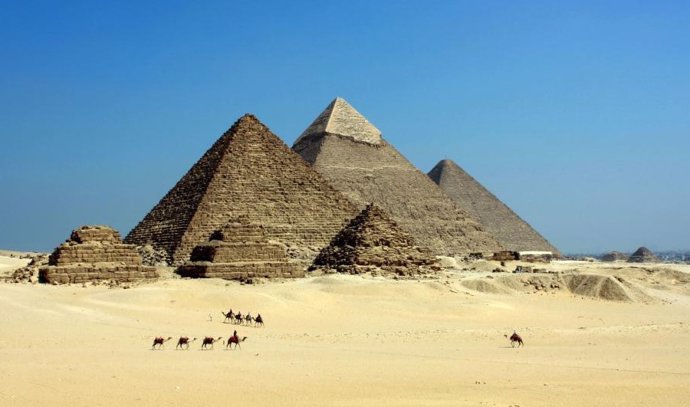Giza Pyramids – FREERANGESTOCK.COM
May 16. () –
31 pyramids in Egypt, including those at Giza, may have originally stood along a 64 km long arm of the Nile Riverlong buried under farmland and desert.
The findings, published in an article in ‘Communications Earth & Environment’, could explain why these pyramids are concentrated in what is now a narrow e inhospitable desert strip.
The Egyptian pyramid fields between Giza and Lisht, Built over a period of almost 1,000 years beginning approximately 4,700 years ago, They now lie on the edge of the inhospitable Western Desert, part of the Sahara. Sedimentary evidence suggests that the Nile used to have a much greater flow, and that the river divided into several branches in some places. Researchers have previously speculated that one of these branches could have passed through the pyramidal fields, but this has not been confirmed.
Eman Ghoneim, of the University of North Carolina Wilmington, and his colleagues studied satellite images to find the possible location of an ancient river arm that ran along the foothills of the Western Desert Plateau, very close to the pyramid fields. They then used geophysical studies and sediment cores to confirm the presence of sediments from rivers and ancient channels beneath the modern Earth’s surface, indicating the presence of an ancient branch, which they propose to call ‘Ahramat’ (which means ‘pyramids’ in Arabic). The authors suggest that increased accumulation of wind-blown sand, related to a major drought that began about 4,200 years ago, could be one reason for the branch’s eastward migration and eventual sedimentation.
The discovery may explain why these pyramid fields were concentrated along this particular strip of desert near the ancient Egyptian capital of Memphis, as they would have been easily accessible across the river arm at the time they were built. Additionally, the authors discovered that many of the pyramids had causeways ending on the proposed banks of the Ahramat Arm, which they claimed, It is evidence that the river was used to transport construction materials.
The findings reiterate the importance of the Nile as a highway and cultural artery for the ancient Egyptians, and also highlight how human society has historically been affected by environmental change, according to the authors. Future research to find more extinct arms of the Nile could help prioritize archaeological excavations along its banks and protect Egyptian cultural heritage, they add.














![[Img #74683]](https://thelatestnews.world/wp-content/uploads/2024/12/The-main-mistakes-to-avoid-when-betting-on-electronic-sports-300x200.jpg)

Add Comment